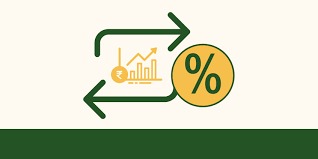
When it comes to real estate transactions, interest rates play a vital role in the process. They impact just about everything when it comes to buyer and seller engagements, and even the smallest changes can have a large impact.
As an investor, it’s important to make sure you have a thorough understanding of how interest rates work and how they can influence your decisions. Taking the time to study these rates and how they move throughout the year can mean the difference between making a profitable decision and buying into a property that you are unable to sell.
Below, we’ll cover the basics of how these rates work and things you’ll want to keep in mind when weighing market trends before making any investment decisions.
How Exactly Do Interest Rates Impact the Real Estate Market
Interest rate movement originates from how the U.S. Federal Reserve establishes its base rate amounts. This largely impacts the current state of the economy, and rates will be adjusted based on a variety of different factors.
Once base rates are established, a large ripple effect typically occurs, especially in how commercial banks charge for financing arrangements like mortgages or personal loans.
Overall, any time these changes take place, there are a number of implications they can cause in the real estate market. These rates will directly impact how new properties are priced and the perceived value of homes being put on the market.
Because interest rates have a direct impact on the willingness of banks to approve loans, they can either motivate or demotivate homebuyers or investors to start exploring new purchasing opportunities.
Essential Things to Keep in Mind When Weighing Interest Rates in Investment Decisions
Affordability of Mortgages
Mortgages are a critical component of purchasing property. But when interest rates are on the rise, this means the cost of a mortgage goes up with it. When rates are too high, potential home buyers have to come up with more financing for each of their monthly payments. This, of course, eats into their budget for other essentials and can make new investments harder to justify.
A negative side effect of this is that buyers often lose any purchasing power they have. Asking prices tend to go higher, or they can get more easily pushed out of the market by other investors with more access to larger deposits.
Rental Market Impacts
High borrowing costs don’t just affect buyers, however. Most of the time, these changes impact rental markets as well. Because higher interest rates can often price individuals out of the market, rental properties become more attractive. But over time, as this ‘buyer-turned-renter’ population increases, there can then be a much higher demand for rental homes and apartments.
For an investor, this can be an opportunity. If you own a rental property and can now charge higher rent, it helps to add extra income to cover the more expensive loan payments on your investment properties.
Applying Optimal Investment Strategies
It’s important to avoid trying to use the same investment strategy for each type of market. For example, when interest rates are high, the cost of borrowing is as well. Because of this, investors tend to focus more on income and properties that generate reliable rental cash flow. That steady rent check is what helps you pay down those expensive mortgage payments while still providing a solid return.
When rates are low, however, the strategy flips. More available funds mean investors can focus more on property growth. Financing is inexpensive, so it’s easier to buy properties with the plan of reselling them quickly for a profit. This is when you see a lot more activity from flippers and new home builders.
Home Renovation Expenses
If your primary focus is on buying, repairing, and selling distressed properties, knowing how interest rates shift is vital. Most house flippers fund their renovations using a Home Equity Line of Credit (HELOC). When interest rates go up, HELOC money costs increase, immediately tightening the budget.
This sets off a chain reaction that can really impact your return on investment (ROI). Just getting access to funds becomes more expensive. A bigger slice of your cash flow now goes straight to the lender to cover ongoing interest payments.
Home renovation budgets also shrink since you’ll have less in the budget for building materials or hiring contractors and subcontractors. All of this is important to consider before jumping into new purchasing opportunities.
Cash Flow and Debt Service
When rates climb, your monthly payments climb with them. That sudden jump in expenses can wipe out your cash flow, leaving you with no money for new investments or, even worse, forcing you into a monthly loss on your own properties.
This is why it’s so crucial to “stress-test” your portfolio, especially when the economy feels shaky. You need to run the numbers and see how much of a rate hike you can handle before your investments are underwater. Doing it before you’re in the middle of a crisis is always better than finding out down the road that you made a bad investment.
Changing Developer Priorities
Builders and developers are also making big decisions based on interest rates. Rate hikes affect their total project cost and how fast they can build. When rates go up, the loans they need for land, labor, and materials get much more expensive.
An increase like that can make a project’s numbers stop working. What looked profitable a few months ago might now be a financial loss. This forces many developers to slam the brakes on new projects and wait for the economic picture to become more clear.
Continue to Track Interest Rates Before Making Investment Decisions
It’s important to remember as an investor that everything in real estate is connected. A change in one area, especially interest rates, will almost always trigger a change in another.
While these changes aren’t always easy to predict, it’s still important to look for clues that could point to rate movement long-term. The best thing you can do is keep yourself informed on industry news and go into every purchase with a clear strategy in mind. This is how you’ll give yourself the best opportunities to maximize profits while successfully managing your risk.
Author Information
Author Name: Michael Alladawi
Author Bio:
Michael Alladawi, CEO & Founder of Revive Real Estate, is a Southern California real estate veteran with a proven track record as a builder, investor, and respected home flipper. Michael created Revive Real Estate to share his industry knowledge and help homeowners maximize their profits when selling their homes. Michael’s passion for his work is as big as his desire to create lasting partnerships. For Michael, it all comes down to how much value one offers, both in business and life relationships.
Author Headshot:




